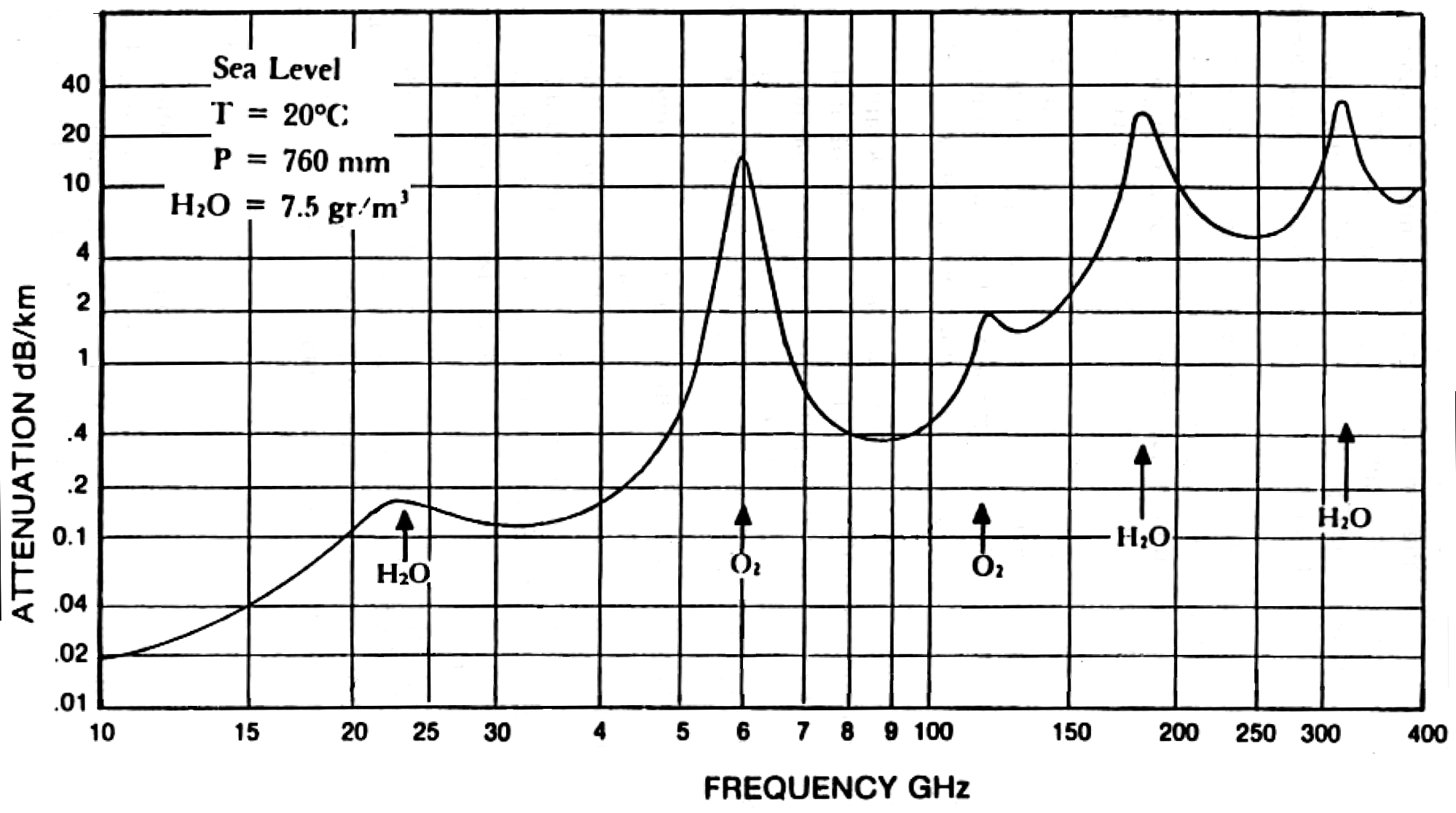|
Size: 941
Comment:
|
Size: 947
Comment:
|
| Deletions are marked like this. | Additions are marked like this. |
| Line 4: | Line 4: |
| The atmosphere attenuates microwaves. This graph is from [[http://transition.fcc.gov/Bureaus/Engineering_Technology/Documents/bulletins/oet70/oet70a.pdf | FCC bulletin 70]], Millimeter Wave Propagation: Spectrum Management Implications , July 1997. | |
| Line 6: | Line 5: |
| {{attachment:FCCatten2.png| |width=800}} | ||{{attachment:FCCatten2.png| |width=600}}||The atmosphere attenuates microwaves. This graph is from [[http://transition.fcc.gov/Bureaus/Engineering_Technology/Documents/bulletins/oet70/oet70a.pdf | FCC bulletin 70]], Millimeter Wave Propagation: Spectrum Management Implications , July 1997.|| |
Path Attenuation due to Orbital and Latitude Elevation
|
The atmosphere attenuates microwaves. This graph is from FCC bulletin 70, Millimeter Wave Propagation: Spectrum Management Implications , July 1997. |
The effective depth of the atmosphere ( Sea level pressure divided by sea level density and gravity ) is 8.5km, and microwaves arriving from space at an elevation angle of E travel through 8.5 / cos(E) kilometers of atmosphere. The attenuation trends upwards with frequency, with absorption peaks at frequencies where oxygen or water molecules resonate. The attenuation at 70GHz is 0.79dB/km, so the attenuation is 6.32 dB / cos(E), a factor of 4.29 at zenith (E = 90 °) and 18.4 at 30 ° elevation.
Find thinsat density versus elevation

